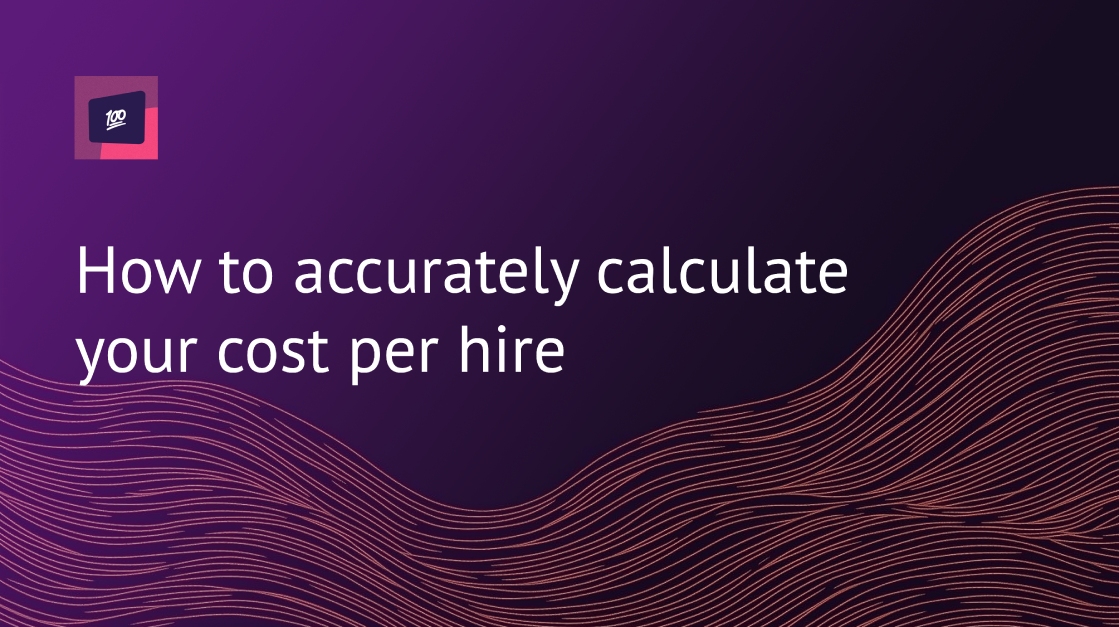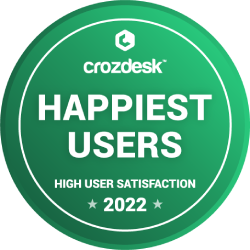How to accurately calculate your cost per hire

Attracting and hiring great employees is one of the most essential functions of any HR department, but it’s also a costly endeavor. The costs of hiring new employees include money spent to cover everything from recruiters’ salaries to job board advertising fees to candidate travel expenses. In fact, recruitment costs account for 15% of all HR spending.
The significant cost of recruiting is why cost per hire, the average amount of money your company spends to hire a single new employee, is one of the most versatile and useful metrics a hiring department can track.
the best candidates faster



Knowing your cost per hire helps you prove the ROI of your recruiting efforts. Use cost-per-hire calculations to track your recruitment spending over time, gain insight into the most efficient way to allocate budgets, and help forecast future spending.
While keeping costs under control is a priority for most companies, the goal of calculating cost per hire isn’t necessarily just to prove how thrifty your hiring department can be. The hiring price tag may increase or decrease year to year based on your recruiting tactics and priorities, as well as the positions you are looking to fill. Use this metric in conjunction with other metrics to narrow in on inefficient spending and optimize your hiring budget.
Calculating cost per hire
Unlike many recruiting metrics, where the formula can be open for interpretation from company to company, cost per hire was standardized in 2012 by the Society for Human Resource Management (SHRM) and the American National Standards Institute. The official formula is:

Divide all of the money you spend on hiring-related items, both internally and externally, by the number of hires in a set period — a year, a quarter, or even the length of a concentrated campaign. Just be consistent.
Let’s break down the variables:
Internal recruiting costs
Internal recruiting costs include all of the in-house resources that are dedicated to hiring, including staff, budget, and organizational costs. This may include, but is not limited to:
- In-house recruiting team salaries
- Education and development costs for the hiring team
- A percentage of hiring-manager salaries based on the proportion of time spent on hiring. So if a manager devotes 10% of their time to interviewing and hiring duties, and 90% to non-hiring related tasks, include 10% of their salary.
- Bonuses paid for employee referrals
External recruiting costs
External recruiting costs include everything your company spends on external vendors or individuals during the course of recruiting. This may include, but is not limited to:
- Software subscriptions: applicant tracking systems (ATS), candidate relationship management systems (CRMs), or screening and testing websites
- Sourcing: agency fees, job-board postings, career fairs
- Candidate vetting: background checks, drug testing
- Travel expenses related to hiring
- Anything spent to entice candidates: dinners, signing bonuses, relocation expenses, etc.
Don’t include anything you spend on candidates after they become employees, such training or accreditation, in your recruiting costs calculations.
Total hires
This is the total number of internal or external hires, either full or part time, who completed the hiring process and were hired during a set period. You may choose to exclude contractors or freelancers, internal transfers, or new employees brought on as a result of mergers and acquisitions.
Benchmarks for cost per hire
Though a lower cost-per-hire number seems inherently better, that’s not necessarily true. The metric is more nuanced than that.
SHRM found that in 2017 the average amount spent per hire was $4,129. However, the cost per hire for the average executive was more than three times that: $14,936.
Your cost per hire is unique to your organization’s structure, needs, and recruiting strategy. It costs more to recruit candidates for higher-level positions, or candidates with rare or competitive skill sets. These candidates are tougher to find, may require more rounds of vetting and interviews, and may require more resources to win over. The amount spent per hire is also dependent on the volume of your hiring: The more people you hire, the lower the average will be (as various investments are spread out over more hires).
Sometimes a higher cost per hire is better. Research by Bersin shows that companies with the most mature recruiting programs actually spend more on the average new employee than companies that are still trying to figure out the recruiting process. In order to attract the best talent, you may need to invest more money in your recruiting efforts.
Leveraging cost per hire
Once you’ve added up all of your internal and external recruiting line items and used them to calculate your cost per hire, use that figure to help improve and optimize your hiring processes.
Track cost per hire over time
Track your cost per hire from quarter to quarter or year to year to monitor how it fluctuates over time. You may see patterns: Perhaps hiring is easier and less expensive during the first quarter versus the fourth. Or you might see how changes in your process, your job board subscriptions, and your hiring tactics affect how much it costs to recruit new talent. Moreover, Implement onboarding modules within the HR software to efficiently onboard new hires. A smooth onboarding process not only improves the candidate experience but also reduces turnover, ultimately impacting long-term hiring costs.
Analyze these changes, then adjust your hiring strategy accordingly. Remember that an increase in cost per hire over time isn’t necessarily a negative trajectory. It may reflect positive changes in your hiring strategy or represent an increased company-wide investment in recruiting.
Evaluate cost-per-hire conjunction with other metrics
Cost per hire is most useful when it is paired with other key metrics to draw greater conclusions about recruiting strategy. Measure it in relation to:
- Source of hire and source quality: Use these metrics to drill down on how effective different recruiting sources are at bringing in quality candidates. Trimming out ineffective channels, or investing more money in effective ones, may cause your cost per hire to change as ROI increases.
- Quality of Hire: How does the increase or decrease of this metric affect the quality of prospective new hires? You may find that a moderate increase in cost per hire leads to higher-quality candidates that contribute more to your company over time.
- Time to Hire: Time to hire is another metric that strategists typically track and try to reduce, given that a shorter time to hire often corresponds to a decrease in cost per hire.
Calculate cost per hire for individual departments or positions
The amount of money needed to attract a good hire can vary dramatically, depending on the type of role you are trying to fill. Calculate cost per hire for different positions to determine which are the most costly to fill, and then try to figure out the underlying reasons for variations in cost.
For example, you may learn that there are a lot of internal costs involved in hiring a software engineer because the position requires multiple on-site interviews and skill assessments. You may be able to streamline the interview process and reduce costs by implementing stricter phone screening or online skill-testing before you bring candidates on-site for in-person assessments.
Use cost-per-hire numbers to plan ahead
Calculating your cost-per-hire numbers can help you forecast future spending. If you know it costs an average of $5,000 to hire a new employee, and you have to fill 20 new positions next quarter, it’s much easier to estimate your necessary budget.
However, if you have to hire for three upper-management positions, and you know those typically cost three times as much to fill, adjust your expectations on upcoming budgets accordingly.
Invest in hiring
Managing cost per hire over time can mean walking a fine line between fiscal responsibility and meeting hiring goals. On the one hand, you want to keep costs low whenever possible to appease leadership. On the other hand, you need to invest money in your hiring resources to attract and eventually hire the best candidates possible.
Think of it this way: Cost per hire is less a goal you need to meet and more a tool for optimizing your hiring process. Use it in conjunction with other metrics to make sure your hiring spending is being allocated as effectively as possible to attract and land the best candidates. Remember that great hires become great employees, who are an important investment in the future of your company.
This article was originally posted on the Google Hire blog
the best candidates faster




